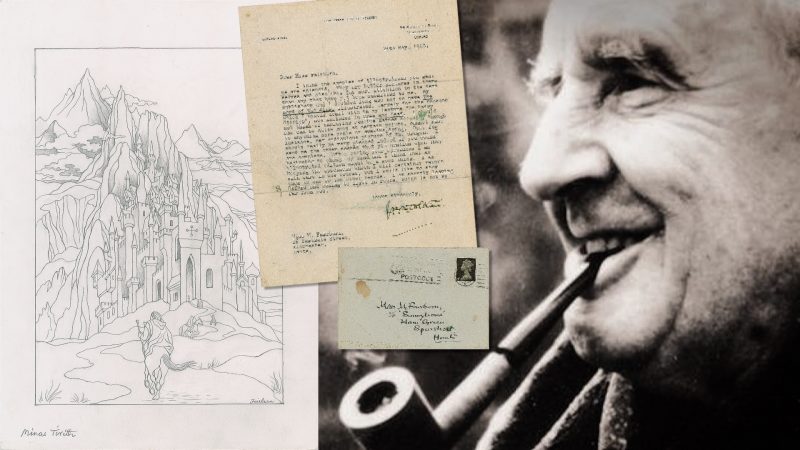We have been fortunate enough to see J. R. R. Tolkien’s epic narratives–his trilogy The Lord of the Rings and also The Hobbit–adapted on the big screen. However, back in the day, it was illustrations that helped readers imagine the fantasy worlds of the Oxford-based scholar, teacher, and writer.
Tolkien himself was the first to illustrate his fictitious universe inhabited with all sorts of creatures, humble heroes, and dark magicians; he even invented a language and produced maps to support the narrative. Since Tolkien was primarily a writer, the job of illustrating his stories was soon taken over by other artists, but only on rare occasions did he praise anyone for the effort.
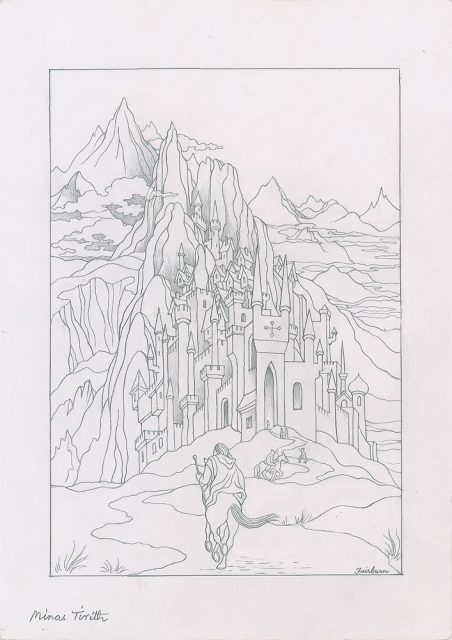
A correspondence that unfolded in 1968 reveals that the novelist did praise one artist, 35-year-old Mary Fairburn. Her drawings of Middle Earth might have even propelled the idea for a new illustrated edition of the trilogy, though that never quite came to be. These letters to Fairburn were part of a collection of letters penned by the legendary writer, between 1955 and 1968, that were recently sold at an auction hosted by Boston-based RR Auction.
According to The Oxford Times, the auction fetched a total sum of $36,000, while single pieces reached prices ranging from $2,700 to $13,000.
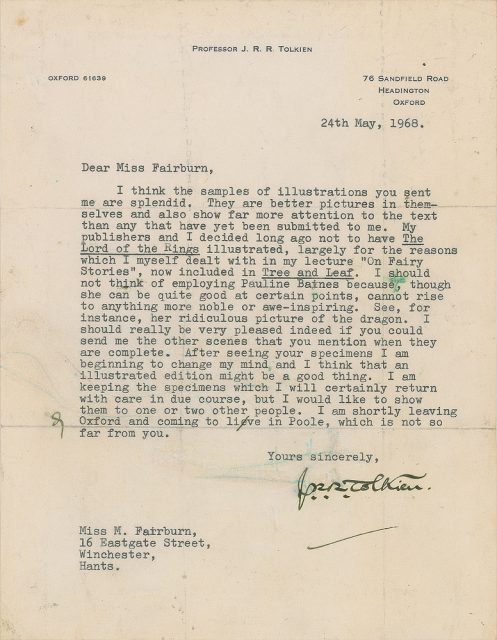
“I decided long ago not to have The Lord of the Rings illustrated,” Tolkien wrote Ms. Fairburn in the first letter, dated May 24, 1968, a one-page machine-typed letter. But then he adds: “After seeing your specimens I am beginning to change my mind.”
For years, the correspondence between Tolkien and Fairburn was unknown to the public. This changed in 2012, when an Australian literary researcher, Dr. Paul Tankard, came across them.
“I think the samples of illustrations you sent me are splendid. They…show far more attention to the text than any that have yet been submitted to me,” Tolkien praises Fairburn. As the letter continues, the writer explains he had agreed with his publishers there wouldn’t be an illustrated version of The Lord of the Rings, however he does express “After seeing your specimens I am beginning to change my mind.”
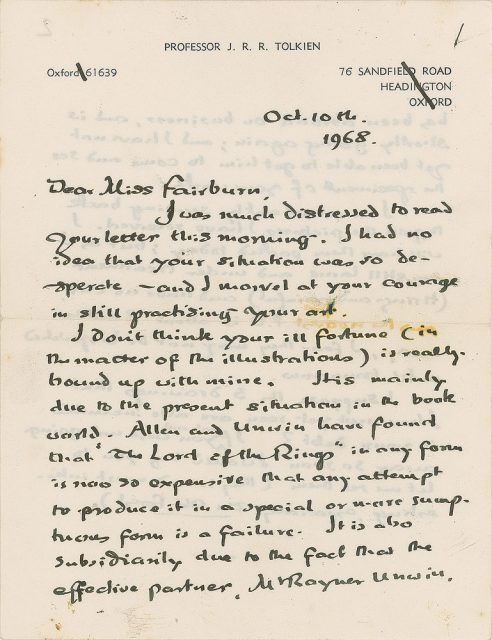
Interestingly, the writer firmly states not wishing to use the drawings by Pauline Baynes, who is sometimes cited as being Tolkien’s favorite illustrator. He notes that “though she can be quite good at certain points, cannot rise to anything more noble or awe-inspiring. See, for instance, her ridiculous picture of the dragon.”
Fairburn was schooled in art and art teaching at London University. It is apparent from Tolkien’s second letter, this one handwritten, that she had explained she was suffering from some financial hardship due to difficulty in finding work. Even though he explains the publishers, Allen and Unwin, deemed it uneconomical to produce a special illustrated edition, Tolkien does offer her a goodwill gesture of £50 “As a gift.”
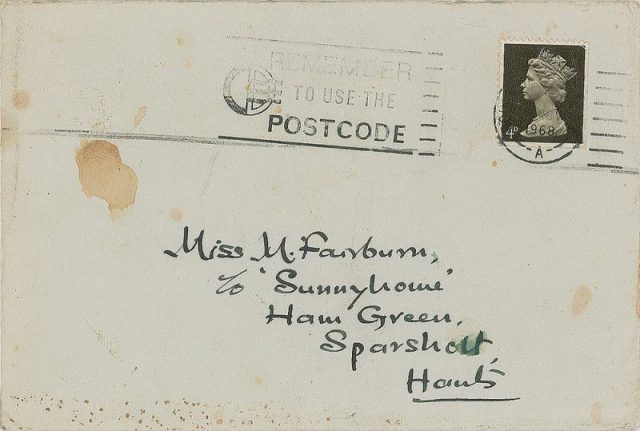
“I had no idea that your situation was so desperate—and I marvel at your courage in still practicing your art” he wrote. It seems that he was impressed enough to compensate Ms. Fairburn for her time, despite not purchasing her artwork.
Signed with his four initials, he also inscribed a postscript seen on the top of the final page. It reads: “I can only hope that the ancient proverb (attributed to King Alfred): ‘When the bale is at the highest then the boot (betterment) is ever highest’ may prove in your case true.”
“I am reluctantly sending back the pictures I have received. … I suppose the 3 drawings that I have not yet seen are also included in your debt? I would beg you to let me see them (they sound most interesting especially The Old Forest). By odd chance Mr. Unwin has just rung me up on business, and I had an opportunity of speaking about you. He was not so decisive as I had expected, and was evidently read to ‘consider’ an illustrated edition—but he was also clear that black and white illustrations would be much more likely to prove publishable. My experience is that the process of ‘considering’…takes time.”
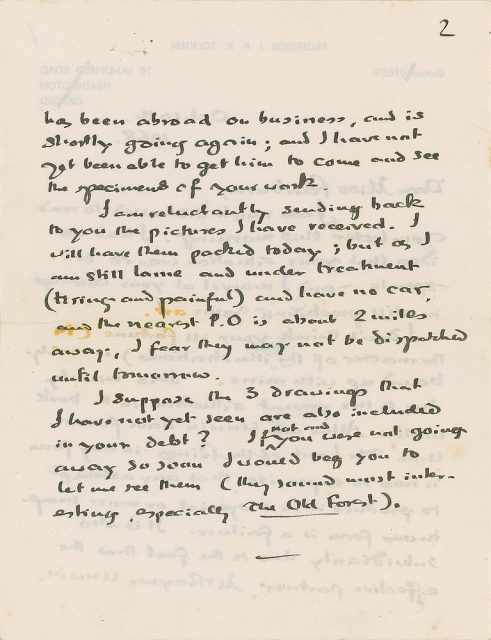
While the letter exchange did result in Fairburn clinching a deal, it is still remarkable that someone moved Tolkien so much that he offered praise for illustrations, and even considered a new version of the trilogy. A year before the writer received the sketches from Fairburn, he had reportedly written to his publisher, Rayner Unwin, that he had reservations about letting anybody illustrate the trilogy, regardless of talent.
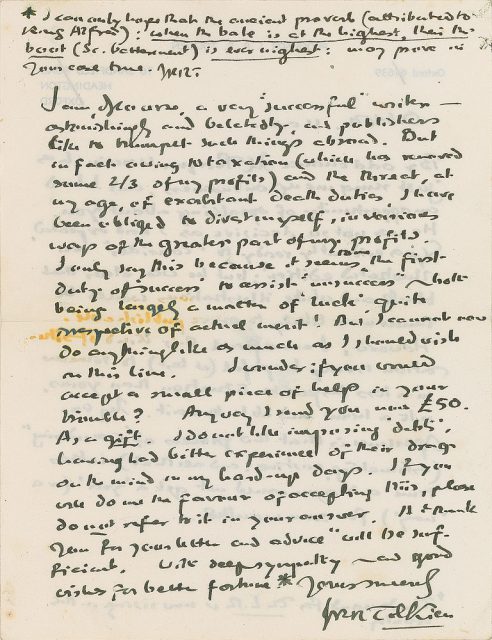
An essay from 1947 is mentioned in one of the letters too, On Fairy Stories, affirming his stance on drawings and literature, saying at one place that “however good in themselves, illustrations do little good for fairy-stories.” Fairburn’s art was featured in 2015 for a HarperCollins official Tolkien calendar.
The original envelope used to mail the second letter, as well a sketch by Fairburn depicting Minas Tirith castle, were included in the same auction lot.
The other four letters offered at the sale included ones which the Oxford-based writer sent to British Ambassador Oscar Morland, Baronne A. Baeyens, “Mr. Mitchell,” and K. F. Mawson.
